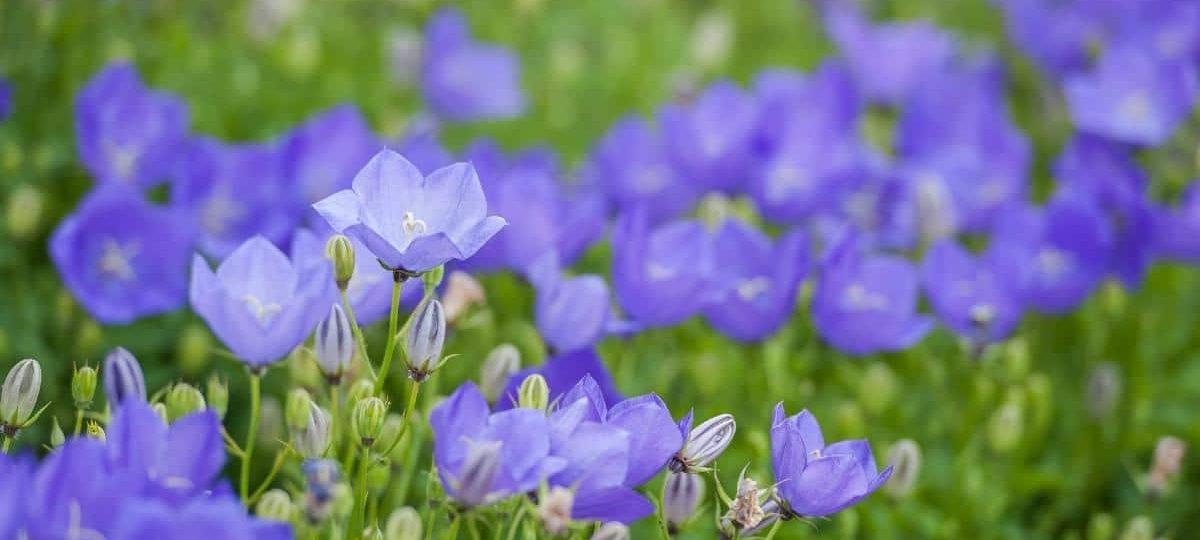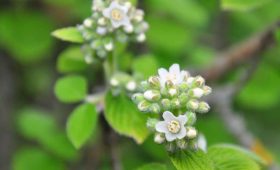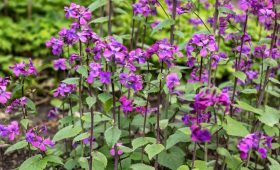memme.info – Balloon Flower (Platycodon grandiflorus) is a perennial plant that is loved for its unique, balloon-like buds and stunning star-shaped blooms. Native to East Asia, this charming flower is known for its smooth, round buds that inflate before opening into large, colorful flowers. With its hardy nature and easy-growing qualities, Balloon Flower is an excellent addition to gardens, providing both visual interest and a touch of whimsy. It thrives in a variety of garden settings, from borders to containers, and attracts pollinators with its bright blooms.
Key Features of Balloon Flower
- Balloon-Like Buds: The most distinctive feature of the Balloon Flower is its unique buds, which begin as tightly closed, balloon-shaped structures before they open into large, star-shaped flowers. This fascinating transformation makes the plant an intriguing choice for gardeners and flower enthusiasts alike.
- Vibrant, Star-Shaped Flowers: Once the balloon-shaped buds open, they reveal beautiful, star-shaped flowers that are typically blue, purple, or white. The petals are wide, delicate, and have a waxy texture that adds to their allure. The large, striking flowers bloom in mid-to-late summer, lasting for several weeks and adding a burst of color to the garden.
- Compact, Upright Growth: Balloon Flower has an upright growth habit, with thick, sturdy stems that support the weight of its vibrant blooms. The plant grows to a height of about 12-36 inches, depending on the variety, and features glossy green leaves that provide a lush backdrop to the flowers. Its compact nature makes it ideal for smaller gardens, borders, and containers.
- Hardy Perennial: Balloon Flower is a hardy perennial that can thrive in a variety of climates. It is known for its cold tolerance, surviving winters in USDA hardiness zones 3-8. The plant goes dormant in winter, and in spring, it regrows from the base, sending up fresh shoots that bloom in the warmer months.
- Pollinator-Friendly: Balloon Flower’s bright, showy flowers attract bees, butterflies, and other beneficial pollinators. This makes it a great addition to any pollinator garden, helping to support local ecosystems by providing food for these important creatures.
Growing and Caring for Balloon Flower
- Sunlight: Balloon Flower thrives in full sun, where it can soak up the sunlight it needs to produce abundant blooms. It can tolerate some light shade, but it may not flower as profusely in shadier areas. For the best results, plant it in a location that receives at least 6 hours of direct sunlight each day.
- Soil: This plant prefers well-drained, slightly acidic to neutral soil. Balloon Flower can grow in a variety of soil types, but it does best in rich, loamy soil that retains moisture but drains well. It does not tolerate soggy or poorly-drained soils, so ensure proper drainage to prevent root rot.
- Watering: Balloon Flower requires moderate watering, particularly during dry spells. Water the plant deeply to ensure that the soil around the roots is moistened. However, be careful not to overwater, as this can lead to root rot. Once established, Balloon Flower is relatively drought-tolerant and does not need frequent watering.
- Temperature: Balloon Flower is adaptable to a range of temperatures and can grow in USDA hardiness zones 3-8. It is a hardy plant that can survive through cold winters, although it may die back to the ground during winter and regrow from the roots in the spring. In warmer climates, provide some afternoon shade to prevent the plant from becoming stressed during the hottest part of the day.
- Fertilization: Balloon Flower benefits from occasional feeding during its growing season. Apply a balanced fertilizer in early spring to encourage strong growth and abundant blooms. Be sure to follow the recommended application rates, as excessive fertilizer can result in leggy growth and fewer flowers.
- Pruning and Deadheading: To encourage more blooms and keep the plant tidy, deadhead spent flowers regularly. After the plant finishes flowering, you can cut back the stems to promote fresh growth. Cutting back the plant in late fall helps prepare it for dormancy, ensuring that it can come back strong the following year.
Popular Uses of Balloon Flower
- Borders and Edging: Due to its compact size and upright growth, Balloon Flower is an excellent choice for planting in borders or as an edging plant. Its tall, vibrant flowers create a striking visual effect and help define the edges of garden beds or walkways.
- Cottage Gardens: Balloon Flower’s charming, whimsical flowers make it a perfect addition to cottage-style gardens, where it pairs well with other traditional flowers like daisies, lavender, and roses. Its easy-care nature and reliable blooms add to its appeal in informal garden settings.
- Container Gardens: Balloon Flower grows well in containers, making it an excellent option for patios, balconies, and small gardens. Its manageable size and vibrant flowers make it an eye-catching addition to any container garden or as a feature plant in a mixed pot.
- Cut Flowers: The beautiful, star-shaped blooms of Balloon Flower are excellent for cut flower arrangements. Whether used in bouquets or as individual stems in a vase, the flowers add elegance and a touch of whimsy to any indoor setting.
- Pollinator Gardens: Balloon Flower is a fantastic addition to pollinator-friendly gardens, attracting bees, butterflies, and hummingbirds with its bright, nectar-rich flowers. Planting this flower helps support local wildlife and promotes biodiversity in your garden.
Companion Plants for Balloon Flower
Balloon Flower pairs beautifully with a variety of other plants, particularly those with complementary colors and growth habits. Some good companion plants include:
- Daylilies: The bold, trumpet-shaped flowers of daylilies complement the star-shaped blooms of Balloon Flower, creating a lovely contrast in the garden.
- Shasta Daisies: The simple, white flowers of Shasta daisies look stunning next to Balloon Flower, with both plants providing a classic garden aesthetic.
- Hostas: The lush, green foliage of hostas contrasts nicely with the upright stems and colorful blooms of Balloon Flower, making it a great partner in shaded garden areas.
- Echinacea (Coneflower): The daisy-like flowers of Echinacea pair well with Balloon Flower, adding texture and interest to the garden with their complementary shapes and vibrant colors.
Conclusion
Balloon Flower is a delightful perennial that brings both beauty and whimsy to any garden. With its unique balloon-shaped buds, star-like blooms, and easy-growing nature, it is an excellent choice for gardeners of all skill levels. Whether used in borders, cottage gardens, containers, or as cut flowers, Balloon Flower is sure to add a touch of charm and elegance to your outdoor space. Its pollinator-friendly qualities and low-maintenance care make it a versatile and valuable addition to any landscape, ensuring that it continues to bloom year after year.




